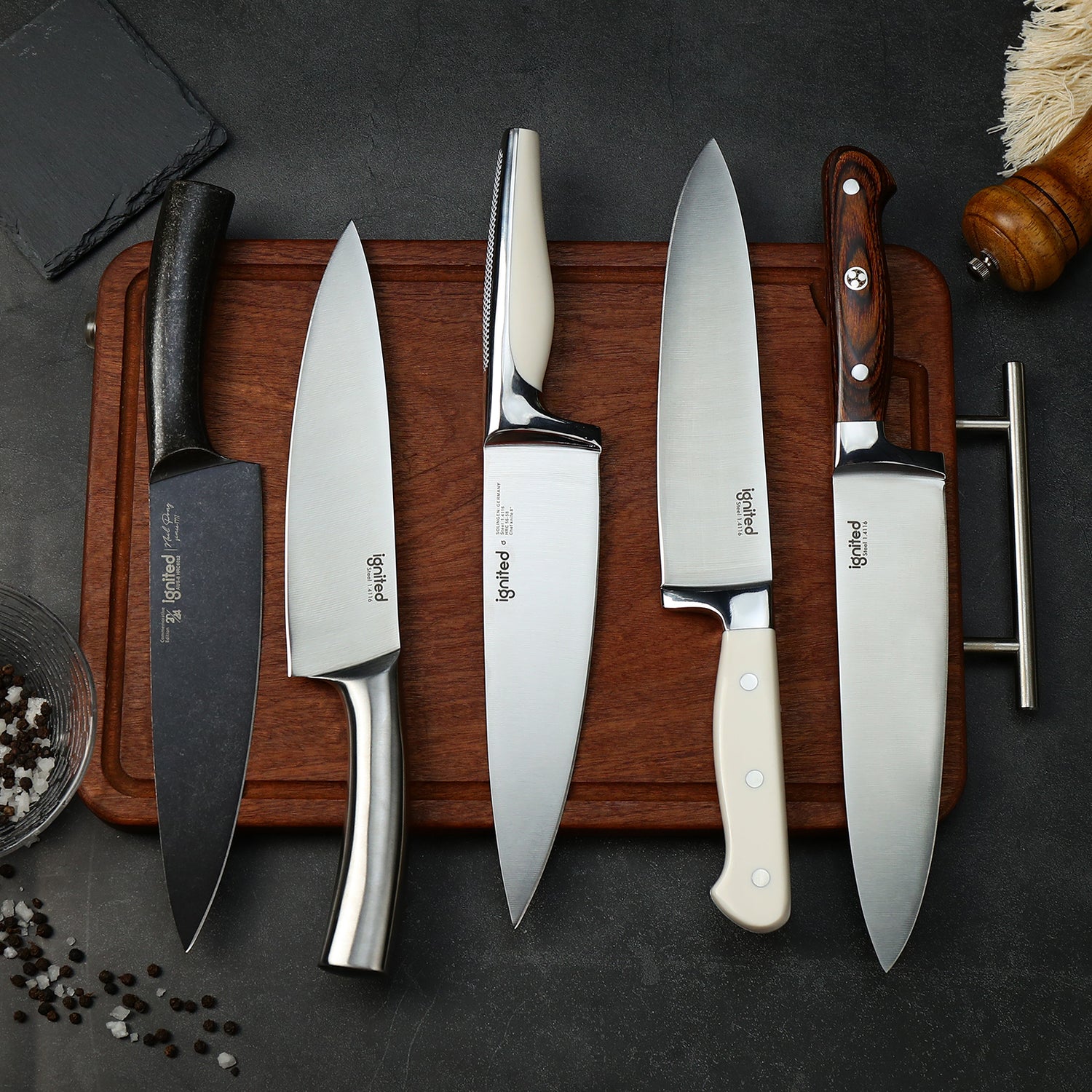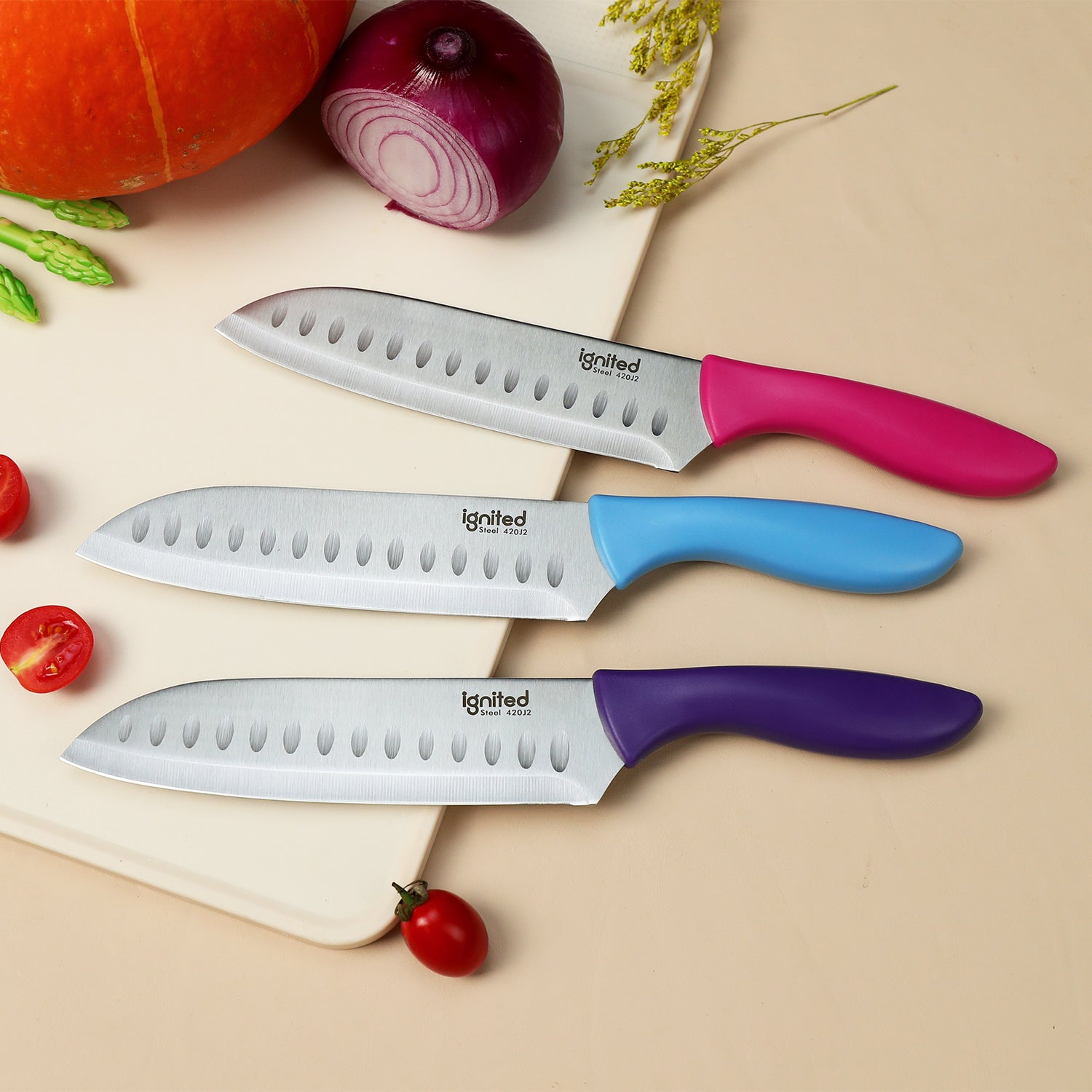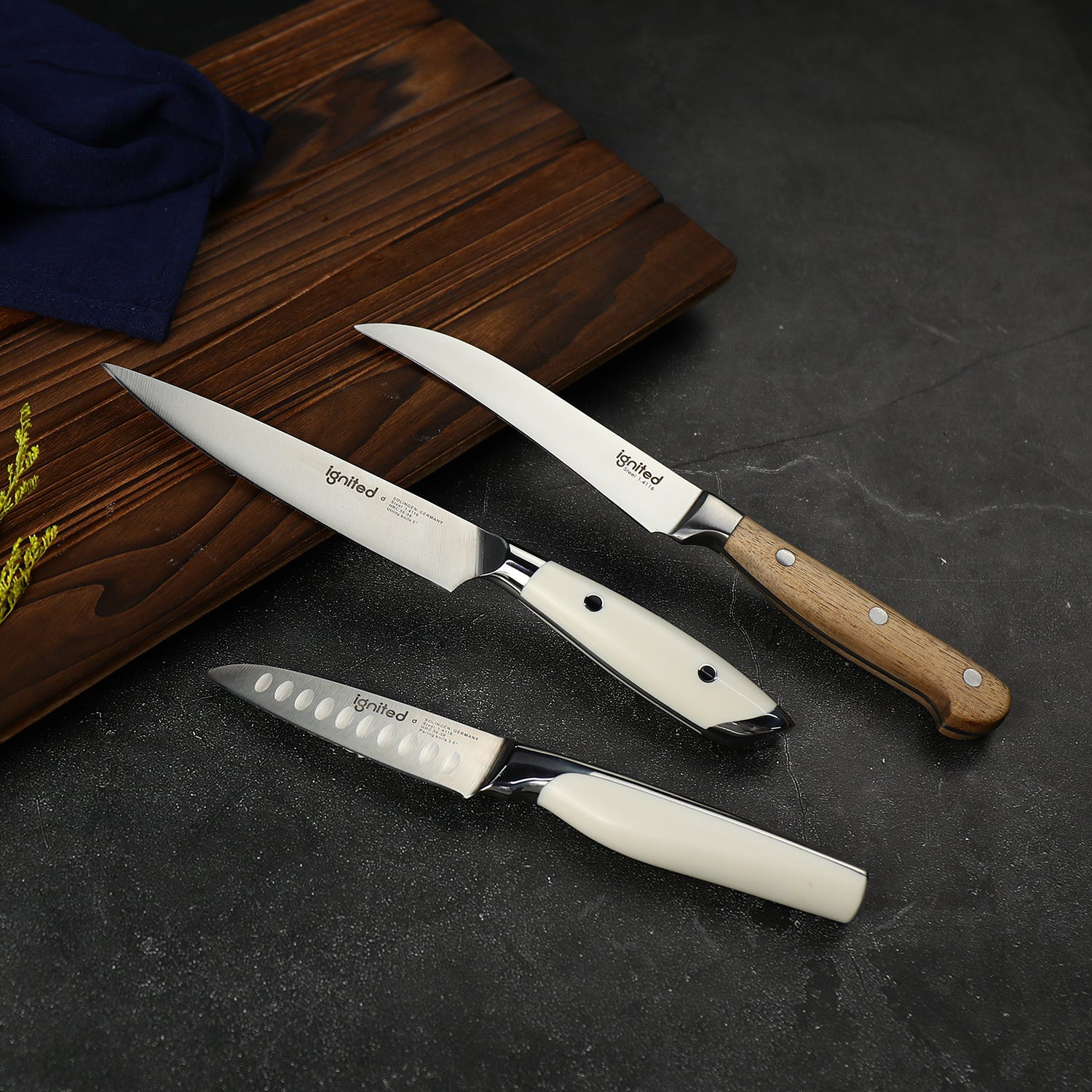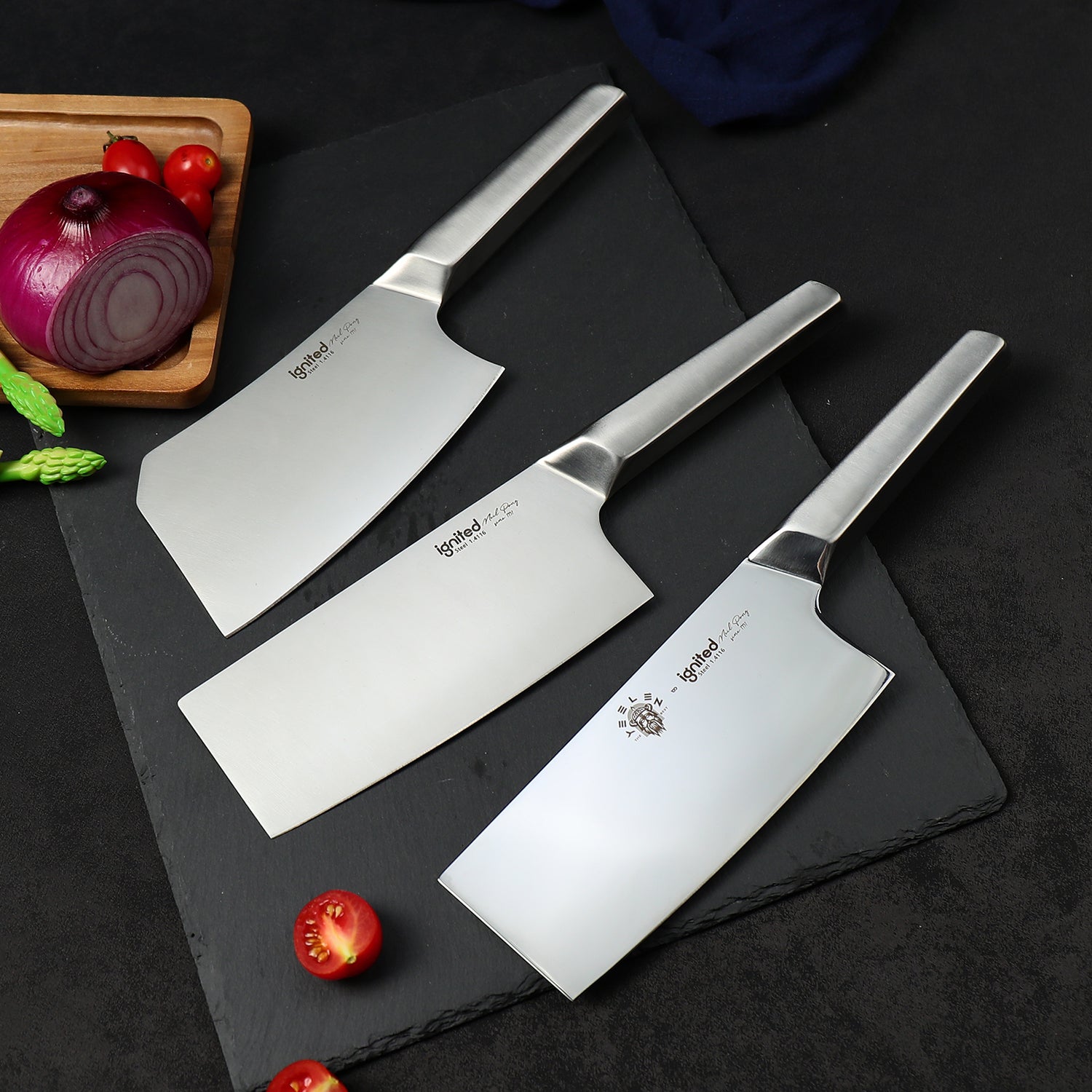A clean knife is safer, lasts longer, and performs better. In this guide, Ignited Cutlery breaks down safe, simple cleaning practices you can use every day—plus the mistakes to avoid—so your blades stay sharp, hygienic, and ready to cook.

Understanding the Importance of Knife Cleaning
Hygiene and Food Safety
Knives can pick up bacteria from raw foods. Cleaning them promptly between tasks helps prevent cross-contamination and supports safe food prep at home.
Maintaining Knife Quality
Residue and moisture can dull an edge and promote corrosion—especially on high-carbon steels. Proper cleaning preserves sharpness, prevents staining, and protects handles and ferrules.
Safe Cleaning Practices for Chef Knives
Immediate Cleaning After Use
- Remove visible debris right away so food doesn’t dry on the blade.
- Give the knife a quick rinse before soaping to make washing easier.
Hand Washing vs. Dishwasher
- Always hand wash. Dishwashers combine heat, harsh detergents, and rattling—bad for edges, finishes, and handles.
- Use warm water and a mild dish soap. Avoid long soaks, especially with wooden handles.
Using the Right Cleaning Tools
- Choose a soft sponge or cloth. Avoid steel wool or abrasive pads that can scratch and dull the blade.
- Mild dish soap is enough—skip bleach and aggressive chemicals on the blade.
- Keep a dedicated sponge/cloth for knives to reduce cross-contamination.
Cleaning Technique
- Hold the handle; wipe from spine toward edge to avoid cuts.
- Clean both sides and the heel/bolster area where residue collects.
- Inspect as you clean—if you see chips, rust, or rolled edges, plan to hone or sharpen.
Rinsing and Drying
- Rinse thoroughly to remove all soap (soap film can spot and attract moisture).
- Dry immediately with a lint-free towel. Don’t air-dry—lingering moisture can stain or rust.
- Optional: a light wipe of food-safe mineral oil on high-carbon blades before storage.
Storing Your Chef Knife Safely
- Use a knife block, magnetic strip, in-drawer slot tray, or edge guards.
- Avoid loose drawers—blades can collide, dull, and chip.
- Store completely dry and away from damp areas.
Regular Maintenance
- Hone lightly before prep sessions to realign the edge.
- Sharpen on stones when honing no longer restores bite.
Common Mistakes to Avoid
- Skipping the quick clean: Dried residue is harder to remove and can etch finishes.
- Using the dishwasher: Heat, detergent, and clanking accelerate dulling and handle damage.
- Ignoring blade damage: Chips and rust spread—address them early with proper sharpening and care.
Frequently Asked Questions
1) What is the best way to clean a chef knife?
Hand wash right after use with warm water and mild dish soap using a soft sponge. Rinse thoroughly and dry immediately with a clean towel.
2) Can I put my chef knife in the dishwasher?
No. Dishwashers dull edges, stress handles, and can cause corrosion. Hand washing is the safest approach.
3) How often should I sharpen my chef knife?
Hone frequently; sharpen when honing no longer restores cutting performance—anywhere from every few weeks to every few months depending on usage and cutting board.
4) What should I do if my knife has rust spots?
Make a paste of baking soda and water and gently rub with a soft cloth or a fine non-scratch pad. Rinse, dry, and add a thin coat of food-safe mineral oil before storage.
5) How should I store my chef knife to keep it safe?
Use a block, magnetic strip, edge guard, or slotted drawer tray. Never store loose in a drawer.
Clean Smarter, Cook Safer
Adopt a quick hand-wash-and-dry routine, store blades properly, and keep a simple honing and sharpening schedule. These small habits protect your investment and make every cut feel effortless.
Ready to upgrade or complete your kit? Explore the full Ignited Cutlery collection.




